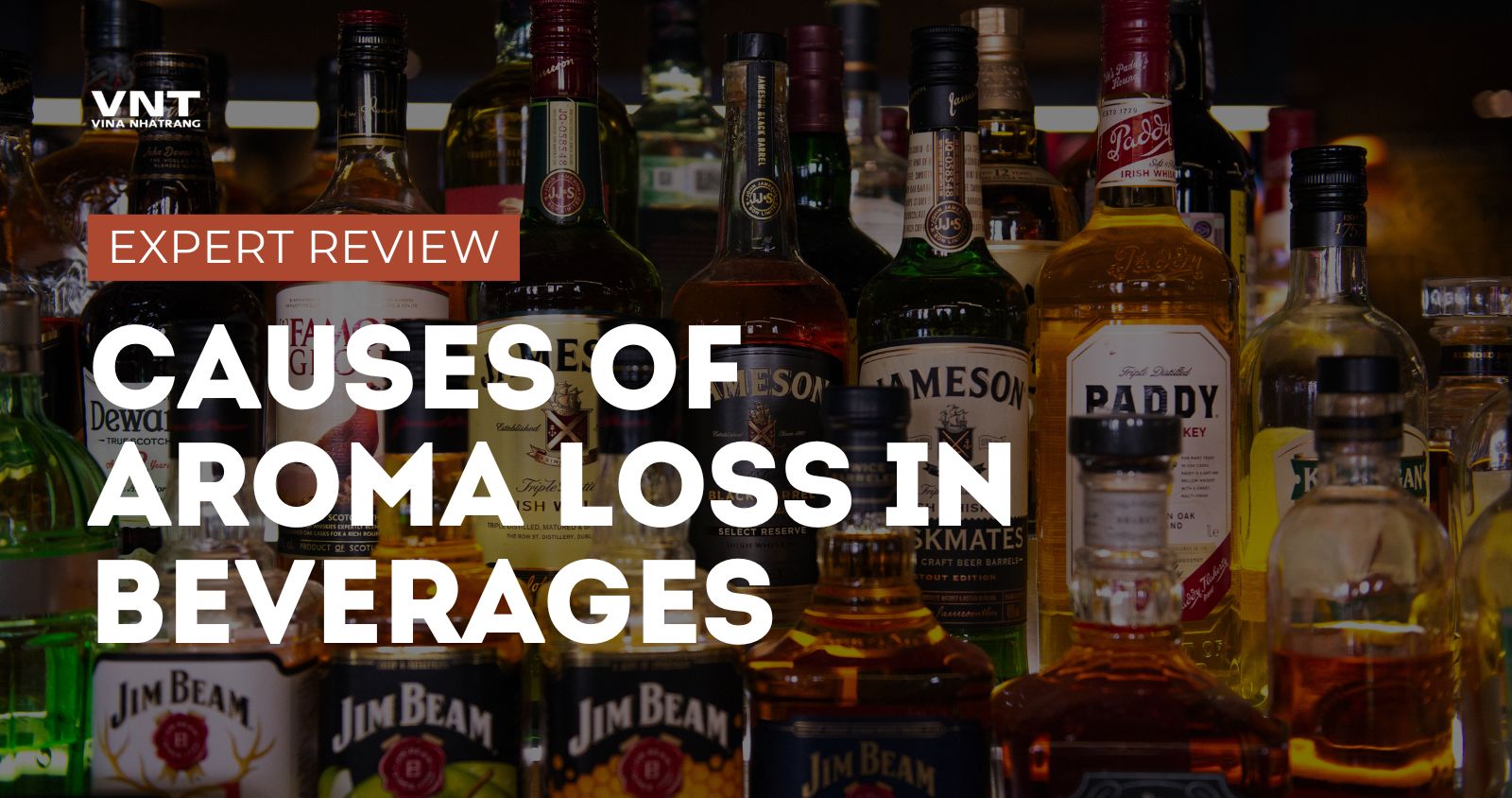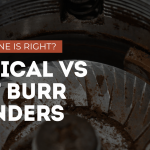Aroma plays a crucial role in the sensory appeal of beverages. However, during processing and storage, many drinks lose their natural fragrance due to chemical and physical changes. This article explores the primary causes of aroma loss in beverages, from oxidation and Maillard reactions to evaporation and fermentation losses.
Chemical Causes of Aroma Loss in Beverages
Chemical changes often result in permanent aroma loss or the formation of undesirable flavors.
1. Oxidation: The Primary Culprit in Aroma Degradation
What is Oxidation?
Oxidation is a chemical reaction where molecules lose electrons, typically through interaction with oxygen. In the context of beverages, oxidation primarily affects organic compounds, particularly volatile aroma compounds, leading to their degradation or transformation into new compounds. Oxidation can be triggered by factors such as heat, light, air exposure, and the presence of certain metals acting as catalysts.
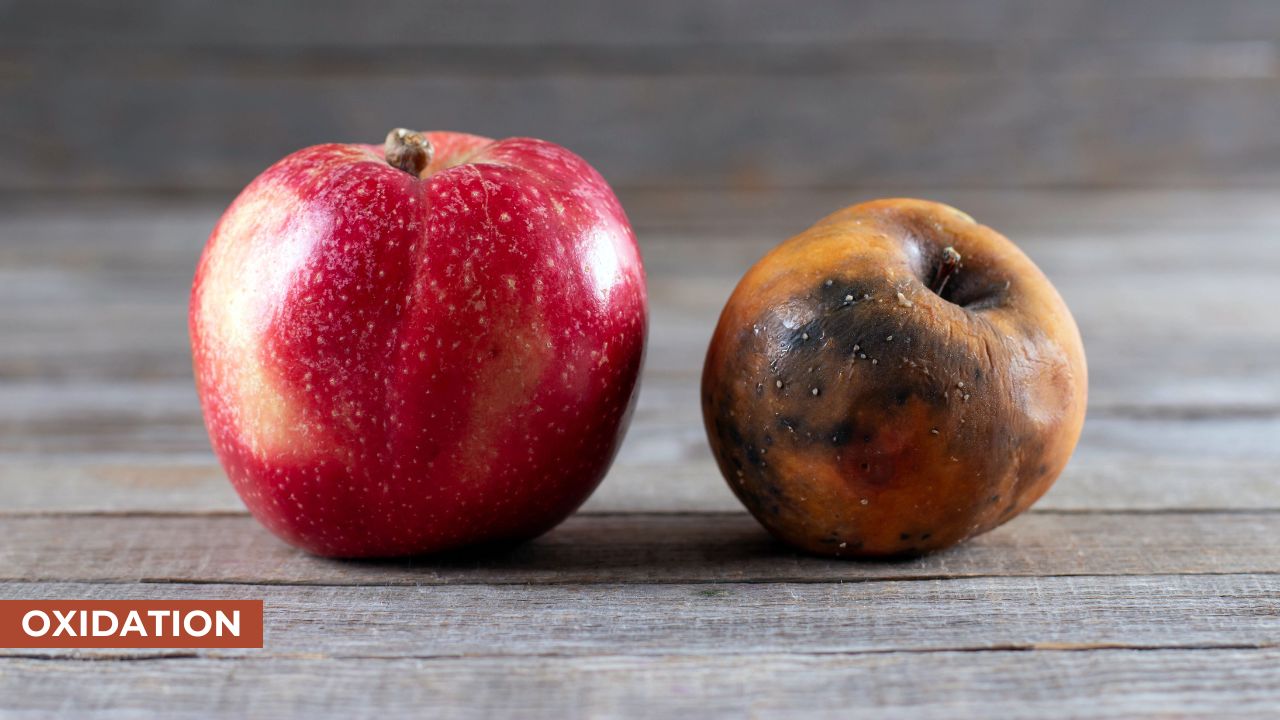
How Oxidation Affects Beverage Aromas
Oxidation is one of the primary culprits behind aroma degradation in beverages, significantly altering their sensory characteristics. This chemical reaction affects volatile compounds, leading to a loss of freshness, the development of off-flavors, and an overall decline in beverage quality.
1. Degradation of Key Aroma Compounds
Many of the most desirable aromas in beverages come from volatile organic compounds like esters, aldehydes, and terpenes. These compounds are highly reactive with oxygen, which breaks them down or transforms them into less aromatic or unpleasant compounds.
- Esters, responsible for fruity and floral notes, hydrolyze and oxidize into acids and alcohols, reducing the vibrant, fresh fruit aroma.
- Aldehydes, which contribute to green and citrusy notes, are highly reactive and can oxidize into acids, leading to a loss of crispness and freshness.
- Terpenes, crucial in citrus beverages and herbal drinks, degrade into oxidation byproducts with duller, woody, or even musty odors.
2. Formation of Unwanted Byproducts (Off-Flavors)
Oxidation doesn’t just remove pleasant aromas—it also creates new, often undesirable, volatile compounds that can lead to off-flavors.
- Lipid oxidation, especially in fat-containing beverages like dairy or nut-based drinks, produces aldehydes and ketones, resulting in stale, cardboard-like, or rancid notes.
- Oxygen interaction with phenolic compounds in tea, coffee, and wine leads to bitterness, astringency, and a loss of delicate floral or fruity nuances.
- Sulfur compound oxidation in wines and fruit juices can generate sulfurous or cooked aromas, making the beverage taste aged or overprocessed.
3. Diminished Overall Aroma Intensity
Oxidation leads to a general loss of volatile compounds, reducing the aroma intensity of a beverage. This is especially evident in products like fresh fruit juices, beers, and wines, where the vibrant aroma bouquet is essential to quality perception.
- Even at low oxygen levels, oxidation can reduce the concentration of key volatiles, making the beverage smell flat or muted.
- In carbonated drinks, oxidation combined with CO₂ loss further diminishes the bright and crisp aromatic profile.
4. Shortened Shelf Life and Quality Deterioration
The effects of oxidation continue to progress during storage, meaning that even if a beverage starts with an excellent aroma profile, prolonged exposure to oxygen will degrade its sensory attributes over time.
- Beverages stored in permeable packaging or with headspace oxygen will experience a faster aroma loss.
- Heat, light, and metal ions accelerate oxidative reactions, leading to more rapid deterioration.
Prevention Tips
To mitigate these effects, beverage producers use techniques such as:
- ✅ Minimizing oxygen exposure through vacuum sealing, nitrogen flushing, and oxygen-barrier packaging.
- ✅ Using antioxidants like ascorbic acid and tocopherols to slow oxidative reactions.
- ✅ Cold storage to reduce oxidation rates and maintain volatile integrity.
- ✅ Aroma recovery technologies to capture and reintroduce lost volatiles during processing.
Oxidation is an inevitable challenge in beverage production, but with proper formulation and processing strategies, its impact on aroma loss can be significantly minimized.
2. Maillard Reactions: How Heat Alters Aromas
What is the Maillard Reaction?
The Maillard reaction is a complex series of non-enzymatic browning reactions that occur between reducing sugars (such as glucose and fructose) and amino acids when exposed to heat. This reaction is responsible for the deep flavors and aromas found in baked goods, roasted coffee, and caramelized foods. However, in beverages, especially those that rely on fresh, fruity, or delicate aromatic profiles, Maillard reactions can lead to unwanted aroma alterations.
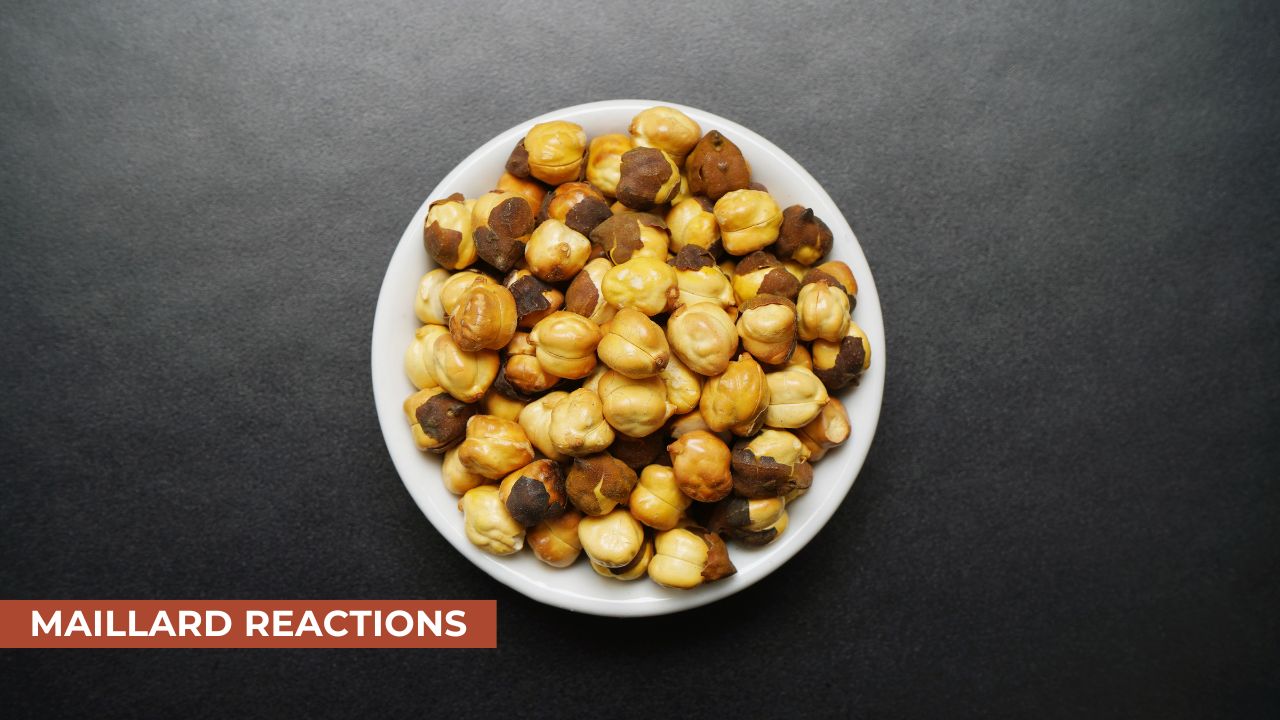
How Maillard Reactions Change Beverage Aromas
1. Formation of New Aromas (Cooked or Caramelized Notes)
During beverage processing, particularly under heat-intensive conditions such as pasteurization, drying, or concentration, Maillard reactions can produce a variety of new aromatic compounds.
- Furans, pyrazines, and thiophenes are commonly formed, which contribute to caramelized, roasted, and nutty notes.
- Strecker aldehydes develop, imparting toasty, malty, or slightly nutty aromas.
- In fruit-based beverages, this reaction can introduce unintended warming or baked fruit characteristics, diminishing the perception of freshness.
While these aromas are desirable in coffee or malt-based drinks, they are typically considered defects in fruit juices, teas, and delicate floral beverages, as they interfere with the intended sensory profile.
2. Degradation of Fresh and Fruity Aromas
Maillard reactions not only generate new compounds but also degrade volatile compounds that contribute to fresh, fruity, and floral aromas.
- Esters and aldehydes, which are key to fruity and citrusy profiles, can be chemically altered or destroyed.
- The transformation of certain ketones and alcohols can lead to muted or “cooked” fruit aromas, which make the beverage taste processed rather than fresh.
- In orange juice, for example, fresh monoterpene compounds like limonene may be converted into heavier, less vibrant terpenoid derivatives, altering the overall citrus aroma.
3. Increased Perception of Bitterness and Astringency
In some beverages, Maillard-derived compounds interact with phenolic components, leading to astringency and bitterness.
- Tea, coffee, and cocoa-based drinks often experience this effect, where excessive Maillard reactions result in more tannic, dry, or harsh sensory notes.
- In fruit juices, these reactions can lead to a loss of the natural sweetness perception, making the beverage taste dull or slightly bitter.
4. Color Changes Indicating Aroma Degradation
Maillard reactions contribute to darkening in beverages that undergo heat treatment, often a sign of flavor alteration.
- While mild color development can be acceptable in caramel-based beverages, excessive browning in juices or dairy-based drinks suggests unwanted aroma degradation.
- This browning correlates with the loss of fruity and fresh top notes, as the reaction competes with the preservation of natural volatile compounds.
Prevention Tips
To control and minimize Maillard reaction effects in beverages, manufacturers implement several key strategies:
- ✅ Reducing heat exposure – Utilizing mild pasteurization, low-temperature vacuum concentration, and short processing times to limit the reaction.
- ✅ Lowering sugar and amino acid availability – Carefully formulating beverages to reduce precursors that drive excessive Maillard reactions.
- ✅ Controlling pH and water activity – Adjusting these factors can slow down the reaction rate, particularly in fruit-based drinks.
- ✅ Aroma recovery techniques – Capturing volatile compounds lost due to thermal degradation and reintroducing them post-processing.
While the Maillard reaction plays a valuable role in flavor development for some beverages like coffee, malt drinks, and dairy-based formulations, it can be a challenge in fresh juices, teas, and light floral beverages. Managing processing conditions effectively is crucial to preserving the intended aroma profile while preventing the formation of off-notes.
3. Ester Hydrolysis: Breaking Down Fruity Aromas
What is Ester Hydrolysis?
Ester hydrolysis is a chemical reaction where esters, key contributors to fruity and floral aromas in beverages, break down into their corresponding acids and alcohols. This reaction is catalyzed by acids, bases, heat, or enzymatic activity, leading to the gradual degradation of aromatic compounds.
Beverages rich in esters, such as fruit juices, wines, and flavored drinks, are particularly vulnerable to hydrolysis, which can alter their sensory characteristics over time. The process can be exacerbated by storage conditions, pH levels, and processing methods, ultimately leading to a loss of desirable aroma compounds.
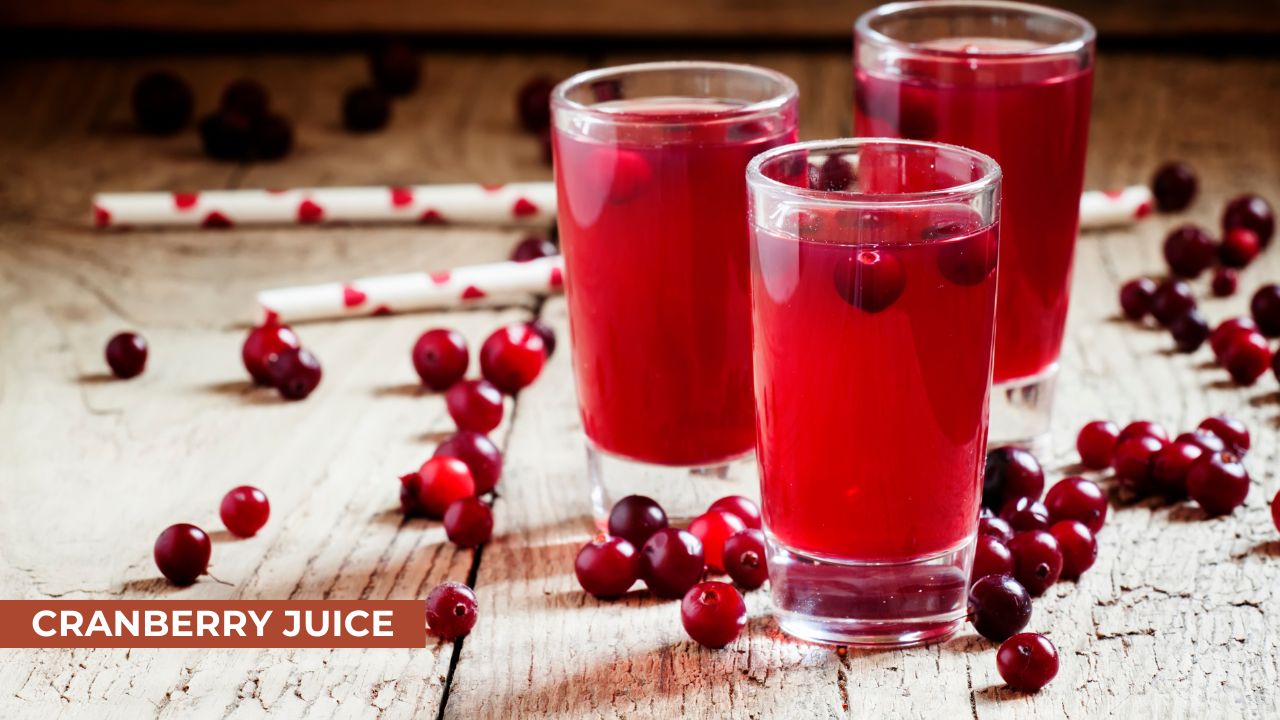
How Ester Hydrolysis Affects Beverage Aromas
1. Loss of Fruity and Floral Aromas
Esters are among the most important volatile compounds responsible for the fresh, fruity, and floral notes in beverages. Hydrolysis breaks these esters into their parent alcohols and acids, which often lack the same intense and pleasant aromatic qualities.
- Ethyl butanoate, a key ester in fruit juices known for its pineapple-like aroma, breaks down into butanoic acid (which has a rancid or sweaty odor) and ethanol.
- Ethyl hexanoate, responsible for apple and pear notes, hydrolyzes into hexanoic acid, which has a fatty or cheesy odor.
- Isoamyl acetate, a major contributor to banana aroma, breaks down into isoamyl alcohol and acetic acid, diminishing the fresh, sweet perception of the beverage.
The result is a beverage that loses its vibrant aroma profile and may develop unwanted off-notes.
2. Increase in Acidity and Off-Flavors
Since ester hydrolysis releases organic acids, it can gradually alter the beverage’s pH and taste profile:
- In fruit juices, excessive hydrolysis leads to a buildup of acids, making the juice taste sour and unbalanced.
- In wines and ciders, uncontrolled ester breakdown can lead to undesirable acidic and solvent-like notes, reducing the complexity of the beverage.
- In dairy-based or plant-based drinks, ester hydrolysis contributes to soapy, fatty, or rancid off-flavors, negatively impacting consumer perception.
3. Heat and Storage-Related Aroma Degradation
The rate of ester hydrolysis increases significantly under certain conditions:
- High temperatures, such as during pasteurization or prolonged storage in warm environments, accelerate hydrolysis and speed up aroma loss.
- Low pH (acidic conditions) promotes acid-catalyzed hydrolysis, which is a major concern in citrus and other acidic fruit juices.
- Long storage durations, especially in non-airtight packaging, allow hydrolysis reactions to progress over time, leading to gradual aroma degradation.
4. Enzymatic Hydrolysis in Fermented Beverages
In fermented beverages like wine, beer, and kombucha, enzymes produced by yeast and bacteria can actively hydrolyze esters post-fermentation:
- Some yeast strains naturally break down esters, reducing the fruity character of aged products.
- Bacterial contamination can introduce esterase enzymes, accelerating hydrolysis and altering the beverage’s intended aroma profile.
Prevention Tips
To control and minimize ester hydrolysis, manufacturers implement several strategies:
- ✅ Optimizing pH levels – Adjusting acidity to slow down acid-catalyzed hydrolysis.
- ✅ Controlling storage temperature – Keeping beverages refrigerated helps maintain ester stability.
- ✅ Using protective packaging – Oxygen-barrier and moisture-resistant materials prevent excess hydrolysis.
- ✅ Enzyme management in fermentation – Selecting yeast strains with low esterase activity preserves ester content.
- ✅ Aroma recovery technologies – Capturing and reintroducing lost volatiles to maintain beverage quality.
Ester hydrolysis is a major factor in aroma loss, particularly in fruit juices, wines, and flavored beverages. By managing processing conditions, storage, and formulation, producers can significantly reduce its impact, preserving the fresh, fruity character of their products.
4. Thermal Decomposition of Sulfur Compounds
What is Thermal Decomposition of Sulfur Compounds?
Thermal decomposition of sulfur compounds occurs when heat causes the breakdown of volatile sulfur-containing molecules in beverages, leading to significant changes in aroma. Sulfur compounds, though often present in minute quantities, have a profound impact on the sensory profile of beverages due to their low detection thresholds.
This decomposition is particularly relevant in heat-processed beverages such as pasteurized fruit juices, thermally treated wines, and sterilized dairy drinks. The reaction is often accelerated by high temperatures, pH variations, and exposure to oxygen or catalytic metals.

How Thermal Decomposition of Sulfur Compounds Affects Beverage Aromas
1. Loss of Fresh and Desirable Sulfur-Containing Aromas
Some sulfur compounds contribute positively to a beverage’s aroma. For example:
- Methanethiol (fresh, green, slightly fruity aroma)
- Dimethyl sulfide (DMS) (mildly sweet, corn-like, or malty note)
- 3-mercaptohexanol (grapefruit and passionfruit-like aroma in wines and juices)
When exposed to heat, these compounds break down into less desirable byproducts or evaporate completely, leading to a loss of their characteristic aromas.
2. Formation of Unpleasant Off-Flavors
Thermal decomposition can lead to the formation of unpleasant, sulfurous, or burnt aromas, which negatively affect beverage quality. Some of the most common off-flavors include:
- Hydrogen sulfide (H₂S): Rotten egg or sewage-like smell.
- Methanethiol and ethanethiol degradation products: Skunky or garlic-like odors.
- Sulfur dioxide (SO₂): Sharp, burnt, or overcooked aroma, often perceived as a “cooked” defect in fruit juices and wines.
This is especially problematic in beverages that undergo high-temperature processing, as the delicate balance of volatile sulfur compounds is easily disrupted.
3. Acceleration of Aroma Degradation Due to Heat and Oxygen
Sulfur compounds are highly reactive and prone to oxidation. In the presence of heat, oxygen, and catalytic metal ions (e.g., iron, copper), they rapidly degrade into volatile or non-volatile byproducts.
- In wine and beer, the degradation of 3-mercaptohexanol and 4-mercapto-4-methylpentan-2-one leads to a loss of their tropical fruit and citrus-like notes.
- In fruit juices, sulfur compounds involved in “freshness perception” break down, making the juice taste dull or aged.
4. Impact on Beverage Stability and Shelf Life
As sulfur compounds degrade, the overall stability of a beverage is compromised.
- In some cases, sulfur compounds may act as natural preservatives, and their loss can make beverages more susceptible to oxidation and microbial spoilage.
- The formation of sulfur-derived off-aromas worsens over time, especially if the beverage is exposed to heat during storage.
Prevention Tips
- ✅ Minimizing heat exposure – Using lower-temperature pasteurization or alternative processing techniques like high-pressure processing (HPP).
- ✅ Controlling oxygen levels – Nitrogen flushing and vacuum packaging reduce oxidative degradation of sulfur compounds.
- ✅ Optimizing pH and formulation – Buffering the beverage’s acidity can help stabilize sulfur compounds.
- ✅ Metal ion management – Chelating agents (e.g., citric acid, EDTA) can reduce the catalytic breakdown of sulfur compounds.
Thermal decomposition of sulfur compounds plays a crucial role in beverage aroma loss, particularly in heat-processed products. Proper formulation and processing techniques can help preserve desirable sulfur compounds while minimizing the formation of unpleasant sulfur-related off-flavors.
Physical Causes of Aroma Loss in Beverages
Physical losses occur when volatile aroma compounds escape due to evaporation, heat, or gas movement.
1. Evaporation During Juice Concentration
What is Evaporation During Juice Concentration?
Juice concentration is a process designed to remove excess water from fruit juices to reduce storage and transportation costs while improving product stability. However, this process inherently leads to the loss of volatile aroma compounds due to evaporation.
Since fruit juices contain heat-sensitive volatiles, the concentration process is often carried out under reduced pressure, low temperatures, and short residence times in evaporators. Despite these precautions, the loss of essential aroma compounds remains a significant challenge.

How Evaporation Affects Beverage Aromas
1. Loss of Highly Volatile Aroma Compounds
During juice concentration, volatile compounds evaporate along with water, altering the original flavor profile. The degree of aroma loss depends on the volatility of each compound:
- Highly volatile compounds (e.g., apple aroma, acetone, ethyl pentanoate) are almost completely lost at an evaporation degree of just 15%.
- Medium volatile compounds (e.g., plum, grape, and hexanol) start disappearing when evaporation reaches 30-60%.
- Less volatile compounds (e.g., apricot, peach, geraniol, ethanol, and isobutanol) are lost at very high evaporation degrees of 50% or more.
This means that concentrated juices often have a weaker, less complex aroma compared to fresh juice.
2. Reduction in Freshness and Flavor Complexity
The removal of key volatile esters and aldehydes leads to a flattening of aroma complexity:
- Fruit esters, responsible for fruity and floral notes, are lost, leading to a duller taste.
- Citrus terpenes, which provide fresh and zesty notes, evaporate, resulting in a juice that tastes “cooked” rather than fresh.
This degradation is particularly problematic in juices where freshness is a key quality marker, such as orange, apple, and berry juices.
3. Concentration of Non-Volatile and Less Desirable Components
As water is removed, non-volatile compounds like sugars, acids, and some polyphenols become more concentrated. This changes the balance of flavors, often making juices taste overly sweet or acidic while lacking the bright, fresh top notes of the original juice.
4. Variability in Aroma Retention Across Different Juices
The extent of aroma loss varies significantly between different fruit juices due to differences in their volatile compositions:
- Strawberry juice retains its aroma relatively well because its key volatiles are low in volatility.
- Apple, grape, and plum juices lose most of their aroma during evaporation, making their concentrated forms much less aromatic than their fresh counterparts.
- Citrus juices (orange, lemon, lime) are particularly vulnerable to aroma loss due to their high content of volatile terpenes and esters.
Prevention Tips
To mitigate aroma loss in juice concentration, manufacturers implement several strategies:
- ✔ Low-temperature vacuum evaporation – Reducing pressure lowers boiling points, minimizing aroma loss.
- ✔ Aroma stripping and recovery – Capturing evaporated aromas and reintroducing them into the final product.
- ✔ Short residence times in evaporators – Limiting heat exposure preserves delicate volatile compounds.
- ✔ Encapsulation of volatile aromas – Using food-grade encapsulation techniques to retain key flavor compounds.
Evaporation during juice concentration is a major factor in aroma loss, affecting the sensory quality and consumer perception of fruit juices. Advanced processing techniques and aroma recovery strategies are essential to maintaining the authentic taste and aroma of the original fruit.
2. Heat-Induced Vaporization During Pasteurization
What is Heat-Induced Vaporization During Pasteurization?
Pasteurization is a heat treatment process used to eliminate pathogens and extend the shelf life of beverages. However, during pasteurization, many volatile aroma compounds are lost due to heat-induced vaporization. This occurs because heating increases the volatility of aroma compounds, causing them to evaporate and escape from the liquid phase.
While pasteurization is essential for food safety, its impact on aroma compounds can significantly affect the sensory quality of beverages, particularly fruit juices, wines, and dairy-based drinks.
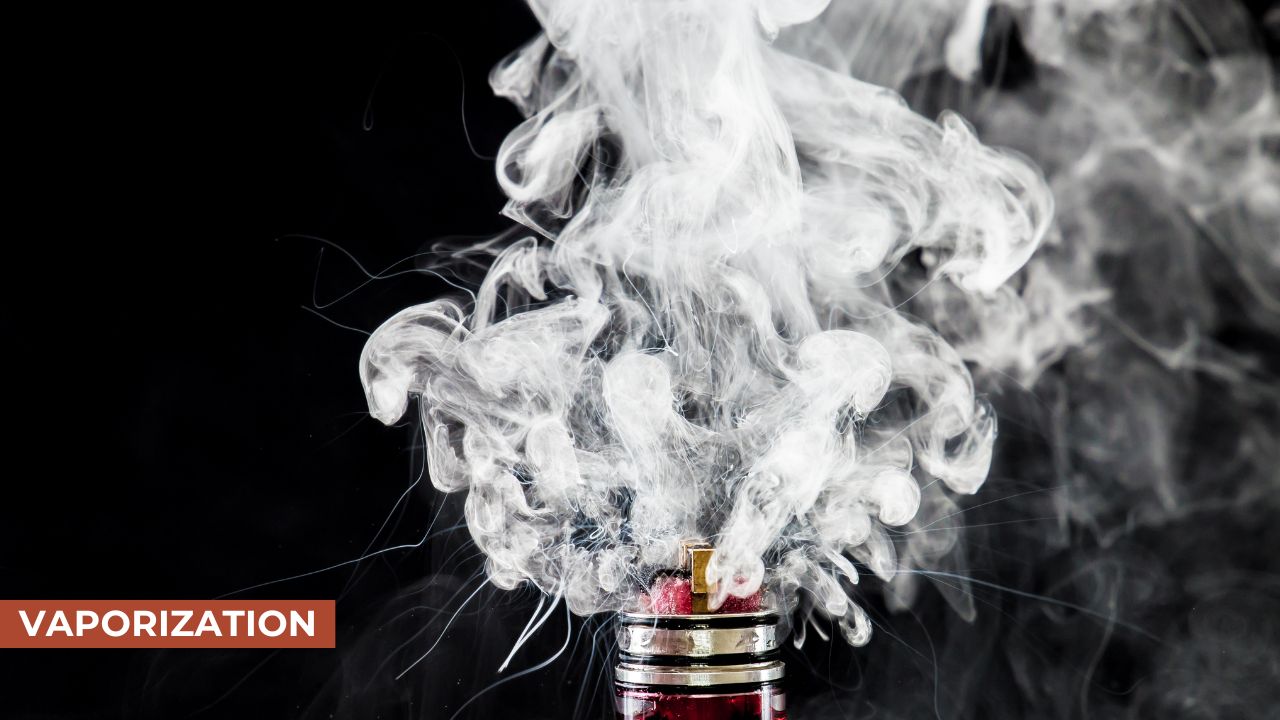
How Heat-Induced Vaporization Affects Beverage Aromas
1. Loss of Key Volatile Aroma Compounds
Many aroma compounds are inherently volatile, meaning they readily evaporate when exposed to heat. During pasteurization:
- Terpenes (e.g., limonene, valencene) responsible for citrus aromas are significantly reduced, leading to a decline in fresh and zesty notes.
- Esters (e.g., ethyl butanoate, ethyl hexanoate) that contribute to fruity aromas in juices and wines are partially or fully lost.
- Aldehydes (e.g., p-cymene), known for their green and floral aromas, are also degraded or evaporated.
As a result, pasteurized beverages often have a less vibrant aroma compared to fresh, unprocessed counterparts.
2. Formation of Cooked or Processed Off-Flavors
In addition to losing natural aromas, pasteurization can also generate new undesirable aroma compounds through chemical reactions:
- Terpene oxidation products (e.g., carveol, trans-2,8-menthadien-1-ol, 4-terpineol, α-terpineol) impart woody, medicinal, or stale notes.
- Acetoin (3-hydroxy-2-butanone), a Maillard reaction byproduct, creates buttery, caramel-like off-flavors, which may not be desirable in fruit-based beverages.
This transformation can make juices and other beverages taste less fresh and more like processed products.
3. Impact on Freshness and Flavor Complexity
The loss of delicate volatiles and the formation of new compounds result in a less complex aroma profile.
- Fresh, fruity top notes are diminished, making the beverage taste flat.
- Citrus-based drinks may lose their characteristic brightness and develop a “cooked” aroma.
- Fermented beverages, such as wine and beer, may experience aroma flattening, where subtle floral and fruity notes disappear.
4. Pasteurization Conditions Influence Aroma Loss
The severity of aroma loss depends on factors like:
- Temperature and duration: Higher temperatures and longer processing times cause greater aroma loss.
- Processing method: Continuous pasteurization (flash pasteurization) at lower temperatures helps retain more volatiles compared to batch pasteurization.
- Oxygen exposure: The presence of oxygen during heating increases oxidative degradation of volatile compounds.
Prevention Tips
- ✔ Lower-temperature, short-time pasteurization (HTST) – Reduces heat impact while ensuring safety.
- ✔ Aroma recovery systems – Capturing lost volatiles and reintroducing them post-pasteurization.
- ✔ Inert gas flushing – Using nitrogen or CO₂ to minimize oxidation.
- ✔ Encapsulation of volatile compounds – Protecting delicate aromas through microencapsulation techniques.
Heat-induced vaporization during pasteurization is a major challenge in beverage production, affecting both aroma intensity and complexity. By optimizing processing conditions and utilizing aroma recovery technologies, manufacturers can reduce aroma losses and preserve the natural sensory profile of their beverages.
3. Degassing in Fermentation & Carbonation
What is Degassing in Fermentation & Carbonation?
Degassing refers to the process of gas removal from a liquid, which occurs naturally during fermentation and intentionally in carbonation adjustments. In the context of beverages, degassing primarily affects aroma retention by stripping volatile compounds from the liquid phase as gas bubbles rise and escape.
- In fermentation, CO₂ is naturally produced by yeast as sugars are converted into alcohol. This CO₂ release can carry aroma compounds out of the liquid, leading to aroma loss.
- In carbonation, beverages are either force-carbonated (e.g., soft drinks, beers) or naturally carbonated (e.g., sparkling wines). However, adjustments in carbonation levels—such as removing excess CO₂ or managing foaming—can lead to unintended aroma loss.
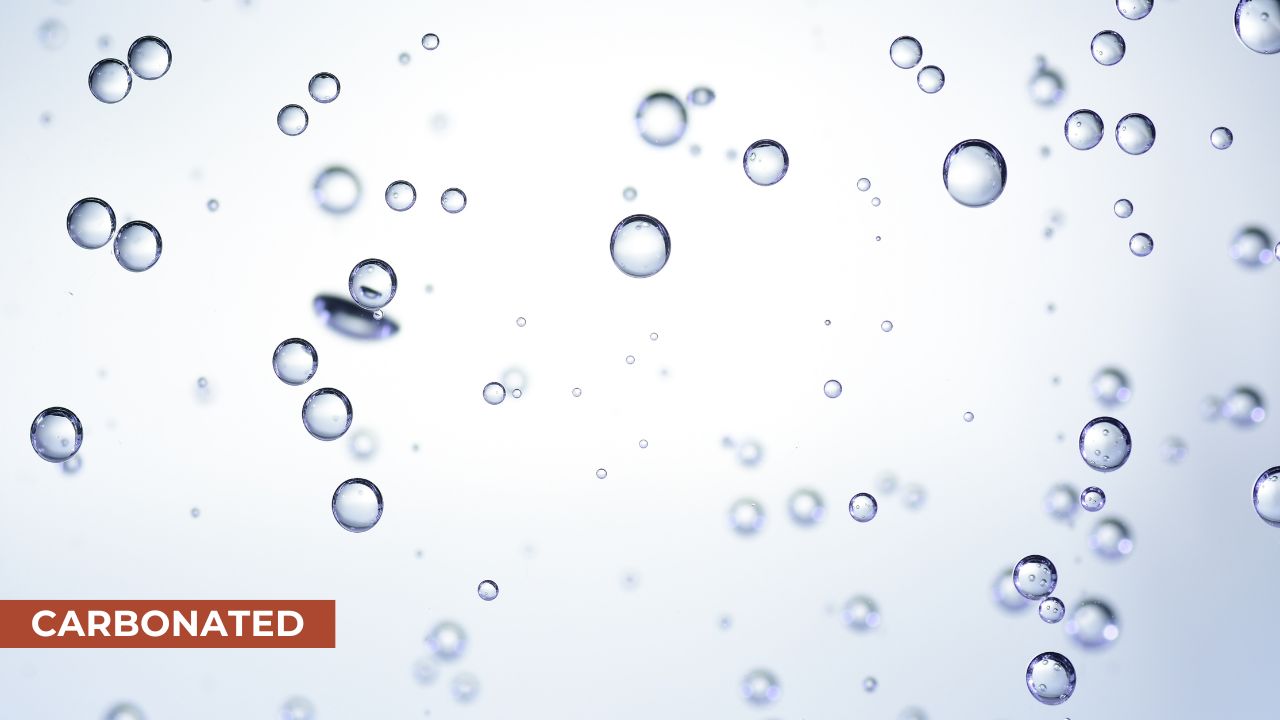
How Degassing Affects Beverage Aromas
1. Loss of Key Aroma Volatiles Due to CO₂ Stripping
As CO₂ bubbles form and escape, they carry volatile aroma compounds with them, leading to a reduction in the beverage’s aromatic intensity.
- Ester compounds (e.g., isoamyl acetate, ethyl butanoate) contribute fruity and floral notes but are highly susceptible to CO₂ stripping.
- Sulfur compounds (e.g., thiols in wine and beer), which provide tropical fruit and passionfruit aromas, are lost as they volatilize with gas bubbles.
- Aldehydes (e.g., acetaldehyde), which contribute to fresh and green notes, are reduced over time during fermentation due to continuous CO₂ evolution.
This effect is particularly pronounced in beer, wine, and sparkling beverages, where excessive degassing can flatten aromatic complexity.
2. Unintended Aroma Alterations in Fermented Beverages
During fermentation, CO₂ degassing can change the balance of aroma compounds by selectively removing more volatile molecules, leading to:
- A less fruity, more neutral aroma profile as esters are lost.
- An increase in earthy or yeast-driven notes as heavier, less volatile compounds remain.
- A diminished perception of freshness, particularly in delicate fruit-forward beverages like cider and white wine.
3. Aroma Degradation in Carbonated Beverages
In carbonated soft drinks and beers, improper carbonation adjustments can accelerate aroma loss:
- Forced degassing (e.g., when adjusting carbonation levels during bottling) can strip top-note volatiles.
- Storage-related CO₂ escape in improperly sealed containers leads to progressive aroma degradation over time.
- Foaming losses during bottling can lead to volatilization of key flavor compounds.
4. Sensory Impact: Reduction in Complexity and Perceived Freshness
When volatile aroma compounds are lost through degassing, beverages lose their intended complexity and depth:
- Beer & cider: Reduced hop and fruity ester aroma, leading to a flatter taste.
- Sparkling wine: Decreased citrus and floral aromas, making the wine seem dull.
- Soft drinks: Loss of essential fruit and spice notes, reducing the intended sensory experience.
Prevention Tips
- ✔ Controlled fermentation conditions – Managing CO₂ release through temperature and pressure adjustments.
- ✔ Optimized carbonation techniques – Using gentle carbonation methods to avoid excessive aroma stripping.
- ✔ Bottle conditioning & sealed storage – Retaining carbonation and volatile compounds through controlled packaging.
- ✔ Aroma recovery methods – Capturing volatiles lost during degassing and reintegrating them into the final product.
Degassing is a critical factor in aroma loss, particularly in fermented and carbonated beverages. By carefully controlling CO₂ evolution and retention, manufacturers can preserve the sensory complexity of their products while minimizing unintended aroma degradation.
Final Summary: How to Preserve Beverage Aromas
| Reason for Aroma Loss | Description | Key Affected Aroma Compounds | Impact on Beverage Quality | Prevention Strategies |
| Oxidation | A chemical reaction where oxygen interacts with volatile aroma compounds, leading to degradation and formation of off-flavors. | Esters, aldehydes, terpenes | Loss of freshness, formation of off-flavors, shorter shelf life. | Use antioxidants, minimize oxygen exposure, optimize packaging. |
| Maillard Reactions | A heat-driven reaction between amino acids and reducing sugars that creates new aroma compounds, often leading to ‘cooked’ or caramelized notes. | Furans, pyrazines, Strecker aldehydes | Unintended caramelized or cooked flavors, reduction of fruity notes. | Lower heat processing, optimize sugar and amino acid content. |
| Ester Hydrolysis | The breakdown of esters into their corresponding alcohols and acids, reducing fruity and floral aroma intensity. | Ethyl butanoate, isoamyl acetate, methyl anthranilate | Diminished fruitiness, increased acidity, and possible off-flavors. | Control pH and storage conditions, use aroma recovery techniques. |
| Thermal Decomposition of Sulfur Compounds | The breakdown of sulfur-containing aroma compounds due to heat, leading to loss of fresh sulfur notes and formation of undesirable off-flavors. | Methanethiol, dimethyl sulfide, hydrogen sulfide | Rotten egg, skunky, or burnt notes; loss of fruity sulfur aromas. | Reduce heat exposure, use inert gas flushing, optimize packaging. |
| Evaporation During Juice Concentration | Loss of volatile aroma compounds during the evaporation process used to concentrate juices, affecting freshness and complexity. | Ethyl pentanoate, hexanol, terpenes | Duller taste, reduced aromatic complexity, loss of freshness. | Use low-temperature vacuum concentration, aroma recovery methods. |
| Heat-Induced Vaporization During Pasteurization | The volatilization of key aroma compounds due to heat exposure during pasteurization, leading to aroma loss and potential off-flavors. | Limonene, ethyl butanoate, aldehydes | Flattened aroma profile, potential ‘cooked’ taste, reduced complexity. | Use lower temperature processing, implement aroma recovery systems. |
| Degassing in Fermentation & Carbonation | The escape of volatile compounds along with COâ‚‚ during fermentation or carbonation adjustments, reducing aroma intensity and freshness. | Esters, thiols, aldehydes | Reduction in fruity, floral, and fresh aromas, leading to a flatter taste. | Optimize fermentation conditions, use controlled carbonation techniques. |
Aroma loss in beverages is inevitable to some extent, but by controlling temperature, oxidation, and processing techniques, we can significantly reduce unwanted changes. Whether you are a manufacturer or a home brewer, these strategies will help you retain the true essence of your favorite drinks.
Want to Enhance Your Beverage Formulations?
🔹 Discover Our Aroma Recovery System! Learn how to retain the fresh, natural flavors in your beverages with advanced aroma recovery techniques HERE.
🔹 Have Questions or Need Expert Guidance? Contact us today to learn how we can help preserve the perfect aroma in your beverages!
